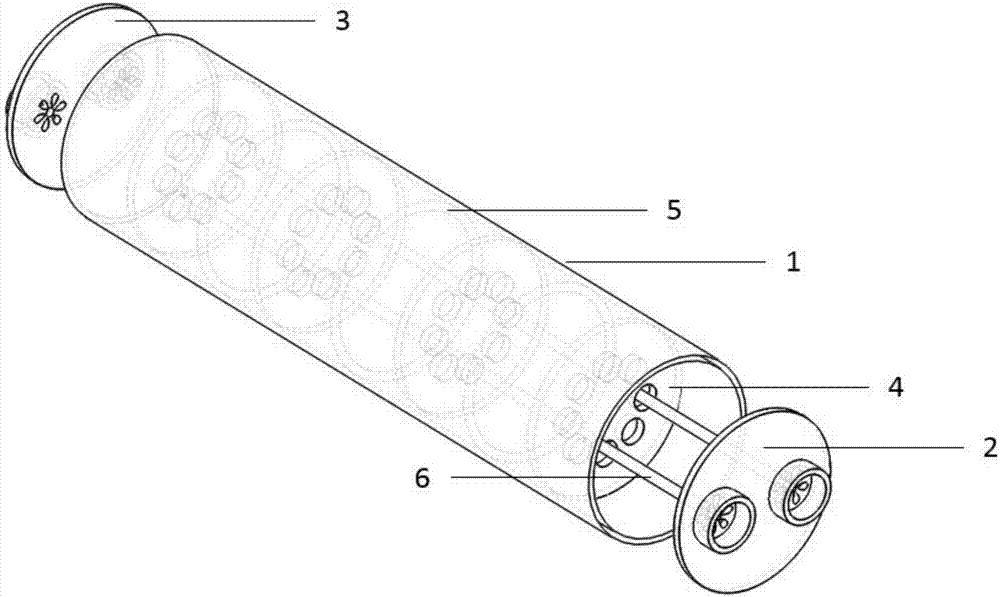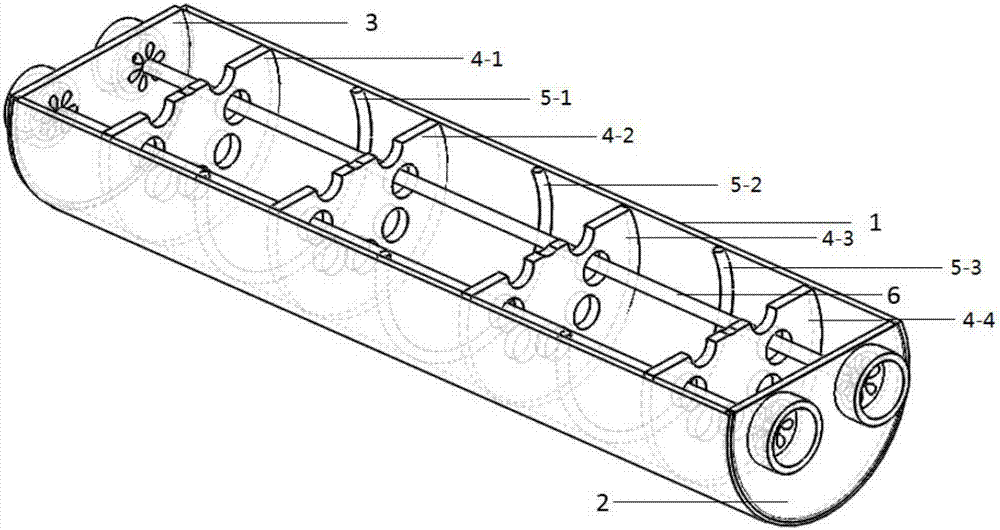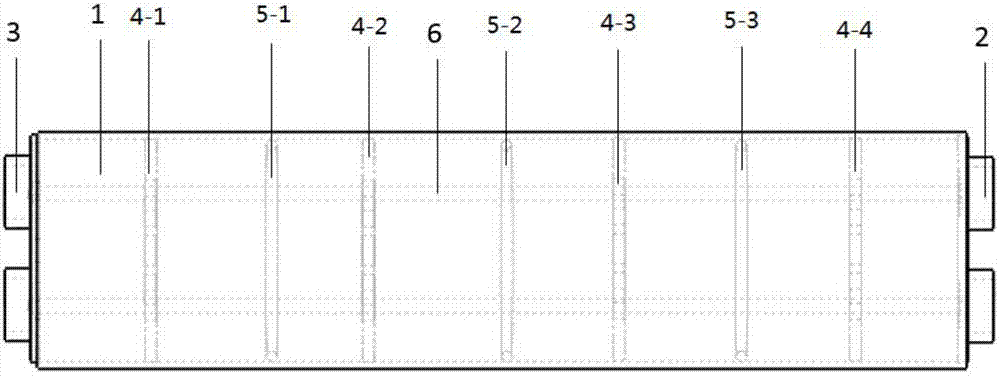Oily sewage purifying device based on photocatalysis and electrolysis technologies
A technology for sewage purification and photocatalysis, which is applied in illumination water/sewage treatment, nanotechnology for materials and surface science, nanotechnology, etc. It can solve the problems of incomplete purification, low purification efficiency, secondary pollution, etc. The effect of improving purification efficiency, increasing contact area, and increasing irradiation area
- Summary
- Abstract
- Description
- Claims
- Application Information
AI Technical Summary
Problems solved by technology
Method used
Image
Examples
Embodiment 1
[0079] When the titanium dioxide nanobelt electrode material layer of the composite carbon nitride is prepared:
[0080] Weigh 25mg of titanium dioxide nanobelts and place them in an agate mortar to grind until there is no obvious graininess, add 40mg of PEG2000, 100ml of distilled water, and 400ml of absolute ethanol, fully grind until the slurry is viscous, and mix the prepared slurry evenly Spread the film on the photocatalytic plate, let the prepared film stand and dry for 12 hours, then place it in a muffle furnace, raise the temperature to 400°C at a rate of 2°C / min at room temperature, and calcinate at 400°C for 1h.
[0081] When preparing the titanium dioxide nanobelt:
[0082]Step 1. Put the anatase powder in an alkaline environment, raise the temperature to 160°C, and conduct a hydrothermal reaction for 40 hours. Take the suspension after the reaction and wash it with water by suction filtration, then pickle it by suction filtration, and dry it after completion 10h,...
Embodiment 2
[0088] When the titanium dioxide nanobelt electrode material layer of the composite carbon nitride is prepared:
[0089] Weigh 28 mg of titanium dioxide nanobelts and place them in an agate mortar to grind until there is no obvious graininess, add 50 mg of PEG2000, 110 ml of distilled water, and 450 ml of absolute ethanol, fully grind until the slurry is viscous, and mix the prepared slurry evenly Spread the film on the photocatalytic plate, let the prepared film stand and dry for 14 hours, then place it in a muffle furnace, raise the temperature to 500°C at a rate of 2°C / min at room temperature, and calcinate at 500°C for 2h.
[0090] When preparing the titanium dioxide nanobelt:
[0091] Step 1. Put the anatase powder in an alkaline environment, raise the temperature to 180°C, and conduct a hydrothermal reaction for 52 hours. Take the suspension after the reaction and wash it with water by suction filtration, and then carry out pickling by suction filtration, and dry it afte...
Embodiment 3
[0097] When the titanium dioxide nanobelt electrode material layer of the composite carbon nitride is prepared:
[0098] Weigh 30mg of titanium dioxide nanobelts and place them in an agate mortar to grind until there is no obvious graininess, add 60mg of PEG2000, 120ml of distilled water, and 500ml of absolute ethanol, fully grind until the slurry is viscous, and mix the prepared slurry evenly Spread the film on the photocatalytic plate, let the prepared film stand and dry for 16 hours, then place it in a muffle furnace, raise the temperature to 600°C at a rate of 2°C / min at room temperature, and calcinate at 600°C for 3h.
[0099] When preparing the titanium dioxide nanobelt:
[0100] Step 1. Put the anatase powder in an alkaline environment, raise the temperature to 200°C, and conduct a hydrothermal reaction for 56 hours. Take the suspension after the reaction, wash it with water by suction filtration, and carry out pickling by suction filtration, and dry it after completion...
PUM
 Login to View More
Login to View More Abstract
Description
Claims
Application Information
 Login to View More
Login to View More - R&D
- Intellectual Property
- Life Sciences
- Materials
- Tech Scout
- Unparalleled Data Quality
- Higher Quality Content
- 60% Fewer Hallucinations
Browse by: Latest US Patents, China's latest patents, Technical Efficacy Thesaurus, Application Domain, Technology Topic, Popular Technical Reports.
© 2025 PatSnap. All rights reserved.Legal|Privacy policy|Modern Slavery Act Transparency Statement|Sitemap|About US| Contact US: help@patsnap.com



